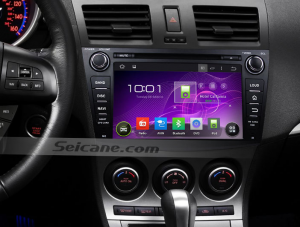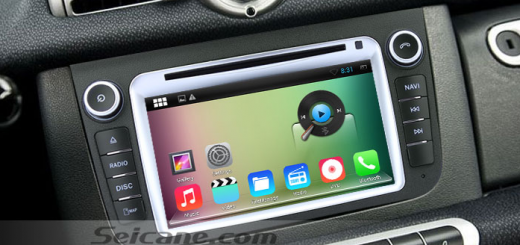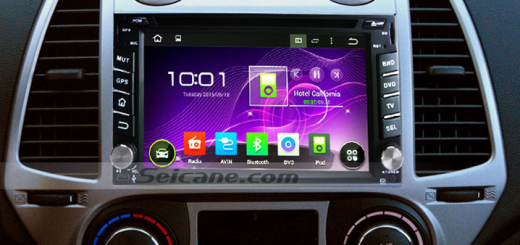Some car owners who want to replace their factory radio with a new aftermarket car stereo for higher-quality sound may find that both USB and AUX can be used for the audio, then what’s the difference between them? Which is better if I want to improve my sound system for better performance? To help you find what you want more quickly, this article mainly about the difference USB and AUX can be helpful for you.
As a matter of fact, the main difference between USB and AUX lies in that a USB connection sends unprocessed digital data to the car stereo via a USB cable like you do it to a computer, while the latter sends a processed, analog audio signal like what you do to earbuds. Both of them have their strong points though, for better sound quality, the USB may be more helpful. An AUX input can be used for a more devices, while USB connections mostly offload the sound processing to the car stereo and you are also allowed to have more operation on the car stereo with it.
Strengths and Weaknesses of AUX Inputs
When you find there is an AUX input on car stereos, it is mostly refer to a 3.5mm jack which is the same type of TRS/TRRS connector that you see on headphones. With the AUX, you can plug directly into the headphone jack with a male-to-male 3.5mm TRRS cable.
The biggest strength of AUX is that it can be compatible of most portable devices for audio input and output with one cable(some may require an adaptor). No matter you have a MP3, an iPod or an iPhone, you can connect it via the AUX to your car stereo for music upgrading. While its weakness is related to the difference between a car stereo and earbuds. Earbuds are small and unpowered, while car stereos have much larger speakers and an amplifier. To be more detailed, your iPhone would do the most when you use an AUX input. The digital music files are processed into an audio signal by the iPhone which will be transmitted to the AUX input in the car stereo via the headphone jack. For the reason that line level outputs aren’t included in an iPhone, it may comes out some noise during the transmission of the audio signal through the amplifier in your car stereo or via the cable and jacks.
Strengths and Weaknesses of USB Inputs
With a USB input, you are able to connect your iPod or iPhone (or other compatible devices) to a car stereo. To play music in your iPod or iPhone, firstly your iPod or iPhone will send unprocessed data to the car stereo, and the car stereo will decode/process the song data into an audio signal. In most cases, amps and speakers will be built with car stereos which will include DACs to process the audio better than other portable music devices.
The more outstanding point of the USB input is its sound quality is higher than the AUX input. Besides, with a USB connection, you can enjoy more features with the car stereo when your iPod or iPhone is connected with the car stereo. For example, you can operate everything in your iPod or iPhone on the car stereo via the USB connection, which is easier and more convenient for you in a car to adjust the volume and change songs and so on.
In conclusion, the AUX inputs mainly send a processed, analog audio signal and can provide the compatibility for you to connect with more portable devices, and the USB inputs mainly send unprocessed digital data to the car stereo and are better at delivering sound of higher quality. Finally, to help you find an ideal car stereo, I’d like to share a website from Seicane, an online car stereo supplier for you: http://www.seicane.com/. Best wishes for you and good luck!




Recent Comments